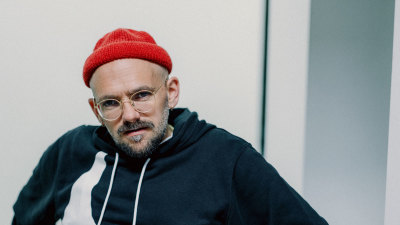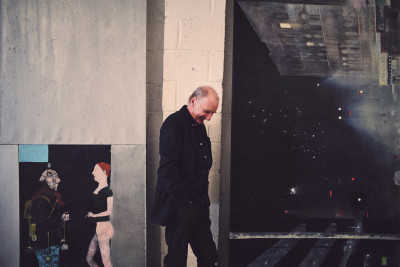10 minutes with… Tim Shaw RA
10 minutes with… Tim Shaw RA
By Elizabeth Hill
Published 1 July 2014
Each month, we have a quick chat with one of our Academicians to find out what they’re up to and what the RA means to them.
-
Creating vast, haunting sculptures that engage with shocking historical events, Tim Shaw’s work is nothing if not powerful. Working with materials that reflect his artistic penchant for conflict and violence, Shaw’s most recent show at the mac Birmingham exhibited his atmospheric Casting a Dark Democracy, alongside the unforgettable Man on Fire. We spoke to the man behind these tortured images to gain an insight into his practice.
-
What are you working on at the moment?
At the moment I’ve just started drawing again, and I want to begin my next piece called Breakdown Clown. I’ve pictured it as possibly a robot – a clown robot – that’s like a dysfunctional therapist, or maybe a shaman or a priest. I’m looking into programming it with artificial intelligence so you can come to it with your problems, and it will respond, perhaps with something you might not necessarily want to hear. However it’s very much at the concept stage at the moment.
I’m also curious about the digital age and how you can see art in the virtual world of the internet. I’m asking myself these philosophical questions about what is deemed as real or unreal; whether it’s all just about perception. It’s interesting how this could change behaviour and perception of reality – does it bear any development on the brain itself?
What is your earliest memory of art?
Well, growing up in Belfast in the 60s, the whole consciousness of art was quite far removed from where I lived. But my mother had gone to painting classes, so my earliest memories of art would probably have been the two paintings on our wall – one of a harbour near Belfast, and the other of the Mourne mountains – that probably just about every person that went to these classes painted.
-

Tim Shaw RA, Casting a Dark Democracy, 2008.
Courtesy the artist.
-
What work of art do you most wish you’d made?
Well, I saw one of the figures from Rodin’s Burghers of Calais (and this in itself is, I think, a very impressive piece of sculpture) in full nude flesh at the Hayward Gallery in 1987. It’s just this figure standing with his arms out, his hands are clenched, and the eyes – the look – is immensely powerful and desperate. I thought that was a remarkable piece of art.
How do you know when a work is finished?
When it’s bought! I say that, not so much as a joke, but I tend to go back and forth on pieces that I make, so that none of the work that I hold on to is ever seen as complete. There are things you can always improve upon, and your ideas can change; you might want to just chop off that arm. Sometimes sculptures even go on fire!
Where were you when you found out you had been elected as an Academician?
I was actually in Piccadilly, would you believe? I’d been judging a show and was getting ready to go to the awards dinner for the Threadneedle. So, I was walking close to here and had this text come through that said, “Congratulations, Tim Shaw RA.” I think I might have just jumped for joy – it was really fantastic to see that. It was wonderful.
-

Tim Shaw RA
Tim takes a selfie in the Academicians’ Room at the RA.
© Tim Shaw
-
What does the RA mean to you?
Well, I mean it is a wonderful honour, but also I live and work in a remote place in Cornwall where you don’t really see anyone, in a very basic situation. So to come out of that environment, and then to walk into this place and meet all these artists and have fellowship with them, it’s a really great thing – a real privilege.
If you were president of the RA for a day, what would you change?
If I was president for the day, I think I would have one rule only. I think that rule would have to be on a day of the general assembly, and I would insist that everybody came naked! How’s that for an answer? Everyone would have to disrobe – but they’d need to have their medals on!
Elizabeth Hill is a contributor to RA Magazine.





